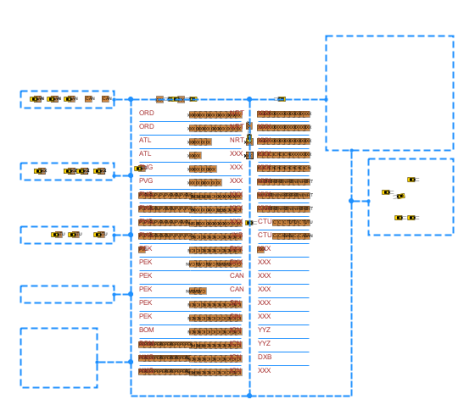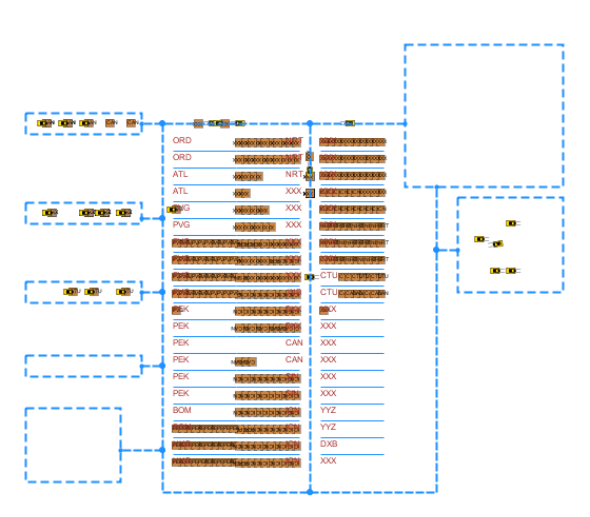Volatile freight volume in airfreight handling represents a challenge for an efficient usage of the available storage areas. Shipping volume fluctuates not only quarterly, but also on a weekday basis. At the end of the week there is generally more freight to be transported than at the beginning of the week, whereby the most freight volume is usually shipped during the night shift.
Many air freight forwarders partition their storage areas dynamically, in accordance to the volume of import and export freight at hand. However, a dynamic storage location assignment inside the export freight partition is seldom used. The export freight is instead stored on fixed storage areas in dependence of the freight’s destination. This fixed storage areas can vary widely in capacity according to the mean freight volume of the transport connection. In times of low freight volume for some transport connections this areas remain unused. Being fixed to one connection, these spaces cannot be used by freight for a different destination. The reservation of storage areas to certain destinations leads to an excess of actually needed storage space at a freight center. A dynamical storage location assignment poses a possible solution for the optimization of storage space utilization inside the freight center as well as for appropriate reaction to fluctuating space requirements for single destinations. A storage space can only be blocked if it is needed for a certain destination. Otherwise the storage space can be used for other purposes. Besides an efficient use of storage area, the dynamic storage location assignment also offers an opportunity for route-optimization of forklifts inside the freight center. The optimized use of freed up spaces can minimize the driving routes of forklifts and therefore minimize the transportation times inside the facility. A route-optimized storage of shipments can also contribute to minimization of traffic inside the freight center, which means less blocking between forklifts along the aisles.
The goal of the project is to study the effects of dynamic storage location assignment on required storage areas and on driving routes of forklifts by means of an agent-based simulation. Besides that, the aim of the project is to examine, whether a needs-based storage allocation assignment can be conducted by the use of forecasting methods and by the use of historic dispatch data.
Key Data:
Runtime: March until September 2017
Sponsor: DB Schenker Deutschland AG





